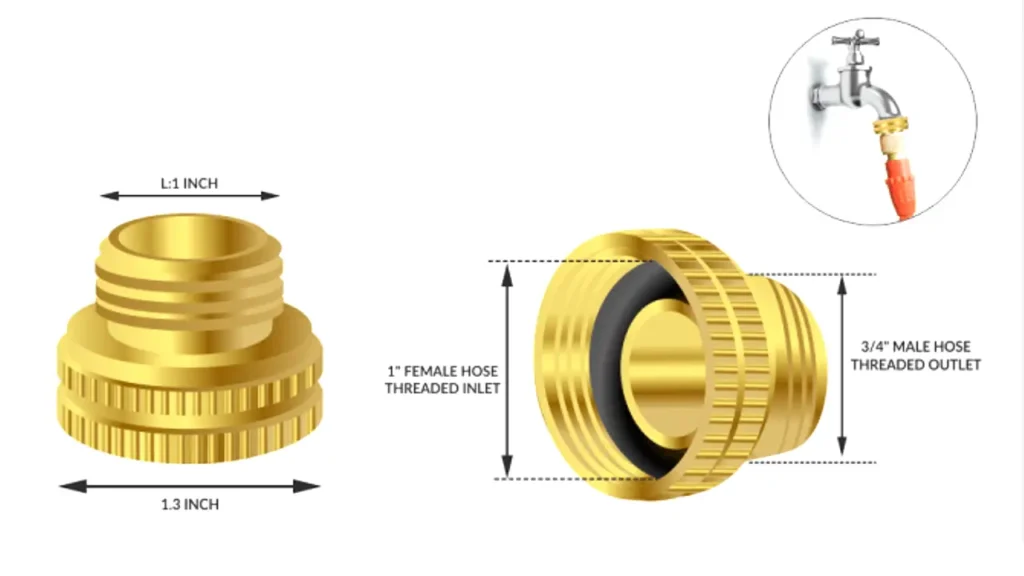Introduction
When it comes to gardening or outdoor water use, knowing your garden hose thread type is crucial. Garden hose threads determine how hoses, connectors, and watering accessories fit together securely. Using incompatible threads can cause leaks, reduce water pressure, or make connections impossible. This article dives deeply into the world of garden hose threads, explaining the various standards, how to identify them, and tips for ensuring compatibility in your garden setup.
Whether you’re a DIY enthusiast, professional landscaper, or homeowner, understanding garden hose threads will save you time, money, and frustration. We’ll cover standard thread types, sizing, and practical guidance to help you make informed decisions when buying hoses or fittings.
What Is Garden Hose Thread (GHT)?
Garden Hose Thread, often abbreviated as GHT, is a specific type of screw thread used on garden hoses and related fittings. It defines how the hose connects to faucets, sprinklers, nozzles, and other accessories.
Key Characteristics of GHT:
- Standardized Thread: GHT follows the American National Standard, making it consistent across most garden hoses in the U.S.
- Size and Pitch: Typically, GHT has a 3/4 inch diameter with 11.5 threads per inch (TPI).
- Thread Form: The threads are straight, not tapered, which means the seal relies on a rubber washer inside the fitting.
This standardization ensures that most garden hoses and accessories interconnect seamlessly, but it’s important to note that other thread types exist globally, which can cause compatibility issues.
Common Garden Hose Thread Types and Sizes
1. Standard GHT (Garden Hose Thread)
- Size: 3/4 inch diameter
- Pitch: 11.5 TPI
- Usage: Most U.S. garden hoses and faucets
This is the most widely used thread for residential garden hoses in the United States. It is designed for easy hand-tightening and uses a rubber gasket to create a watertight seal.
2. NPT (National Pipe Thread)
- Size: Varies (commonly 1/2 inch or 3/4 inch)
- Pitch: Tapered thread
- Usage: Plumbing pipe fittings, outdoor faucets (sometimes)
NPT threads are tapered and create a seal by the threads themselves tightening. They are not interchangeable with GHT because GHT is straight-threaded.
3. BSP (British Standard Pipe)
- Usage: Common in Europe, Australia, and other regions
- Note: BSP threads differ in pitch and diameter from GHT, requiring adapters for compatibility.
4. Metric Threads
- Some hoses and fittings, especially imported ones, use metric threads. These are generally incompatible with GHT without adapters.
How to Identify Your Garden Hose Thread Type
Knowing your hose thread type helps you avoid purchasing incompatible fittings or adapters.
Identification Tips:
- Check the Diameter: Use a caliper or a ruler to measure the outer diameter of the male thread or the inner diameter of the female thread.
- Count the Threads Per Inch (TPI): Count how many thread peaks fit within one inch.
- Look for Markings: Some hoses or fittings may have markings indicating the thread standard.
- Test Fit with Known Standard: Try connecting with a known GHT fitting to see if it screws on smoothly.
If unsure, taking a photo and consulting a local hardware expert can save money and hassle.
Ensuring Compatibility: Tips and Best Practices
1. Use Standard GHT Fittings When Possible
Most garden hoses and watering tools in the U.S. use standard GHT. Sticking to this standard simplifies connections.
2. Invest in Quality Adapters
If you need to connect hoses or fittings with different thread types (e.g., GHT to NPT), use quality adapters designed for these conversions.
3. Check Washer Condition
Since GHT relies on rubber washers for sealing, inspect washers regularly and replace them if cracked or worn to prevent leaks.
4. Avoid Over-tightening
Hand-tighten fittings firmly but avoid using tools that can damage threads or crush washers.
5. Clean Threads Periodically
Remove dirt and debris from threads to ensure smooth connections and prevent cross-threading.
Real-World Example: Avoiding Leaks in a Complex Garden Setup
A homeowner installed a new sprinkler system but experienced persistent leaks at hose connections. Upon inspection, they discovered that some fittings used NPT threads while others were GHT. By switching to GHT-compatible fittings and replacing old washers, the leaks stopped entirely. This case highlights the importance of understanding garden hose thread compatibility.
Conclusion
Understanding garden hose thread types is essential for a leak-free and efficient watering system. The standard Garden Hose Thread (GHT) is the most common in the U.S., characterized by a 3/4 inch diameter and 11.5 TPI straight threads sealed by rubber washers. Recognizing the differences between GHT, NPT, BSP, and metric threads helps you select the right hoses and fittings.
By following identification tips and using quality adapters when necessary, you can ensure a secure, watertight connection in your garden. Remember to maintain washers and avoid over-tightening to prolong the life of your setup.
Next time you shop for hoses or accessories, take a moment to verify thread compatibility. Doing so will save you money, prevent leaks, and keep your garden thriving with efficient watering solutions.
